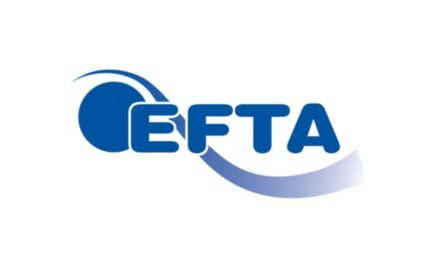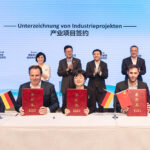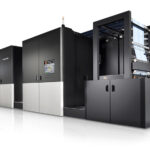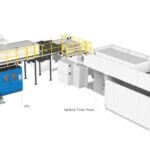The secret lies in the bicomponent primer+ink formula, that creates an opaque mask on the analogical plate that bears the job. The innovative process at the basis of the DigiFlex CtP, represented in Italy by BeeGraphic.
 The only technology alternative to laser. This is how DigiFlex’s Flexojet 1725 CtP was presented, made for the label and flexible packaging sector, during the event that was held from 22nd to 24th May at the San Zeno Graphic Arts school, Verona. It was organized by Goliardo Butti, CEO of BeeGraphic and representative for DigiFlex for Italy, San Marino, the Vatican and Canton Ticino, structured in live conferences and demos to be able to dialogue freely with the guests (some eighty or so operators from north Italy, undertaking to be repeated in the south of the country in the coming months).
The only technology alternative to laser. This is how DigiFlex’s Flexojet 1725 CtP was presented, made for the label and flexible packaging sector, during the event that was held from 22nd to 24th May at the San Zeno Graphic Arts school, Verona. It was organized by Goliardo Butti, CEO of BeeGraphic and representative for DigiFlex for Italy, San Marino, the Vatican and Canton Ticino, structured in live conferences and demos to be able to dialogue freely with the guests (some eighty or so operators from north Italy, undertaking to be repeated in the south of the country in the coming months).
Spotlight on the machine obviously, and its advantages illustrated by Hezy Rotman, CEO of the Israeli company, at Verona along with the European representative Gianpaolo Zani and the “super technician” Dror Shiler. Its salient features: drastically reduced costs and worktimes, max. quality, immediate and simple to operate, creation of systems for all types of prints. In Italy, where the DigiFlex system has only been recently presented, two Flexojet 1725s have already been sold, and the interest is high.
Economies and qualities. The emphasis has been placed on the value of the innovation of DigiFlex technology. The company invested 3 years of work and 3 million dollars, confident as to its benefits to users. Aboveall in terms of price – Rotman underlined – quantified in a “good 40% less compared to a laser CtP”. But also, more appropriately, the general cost of running and ownership, thanks to the fact that Flexojet 1725 users analogical plates (of any brand), hence a lot more affordable than digital ones, and that its production cycle demands less time and less ink, and that the machine takes up 10% less space.
Rotman and later Shiler also drew attention to Flexojet 1725’s userfriendliness, and to the capital question of quality. The DigiFlex CtP was launched at drupa 2012 and has already been installed in 67 companies around the world with positive, documented feedback. At the basis, the excellent print results, the FlatDot technology with strong and well-structured shoulder, that guarantees an extremely accurate reproduction, and that stands up better to long print runs, giving a greater uniformity in the shades and highlights, with a 2880 x 1440 dpi resolution and 220 lpi linescreening.
A question of chemistry. This most innovatory aspect of the DigiFlex project is the use of a new patented primer+ink system that via special software creates a film on which the job is reproduced directly on the plate. The chemical reaction between the two components creates an inkdrop of a typical consistency that falls on the plate without expanding, creating extremely accurate dots; on top of that, the action of the oxygen during the UV exposure is inhibited, generating the flat dot.
With this system you eliminate negative film, obtaining a superior quality digital film. Once the image has been created, what is more, the development doesn’t change, enabling all-told a briefer and more affordable preparation cycle (also in terms of servicing) both for start-ups and in reworking, meaning a better service for the customer.














